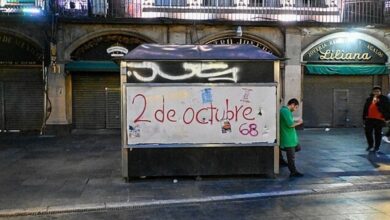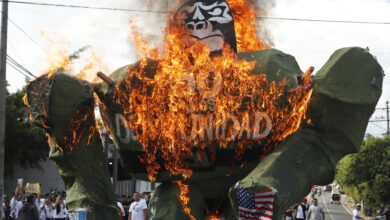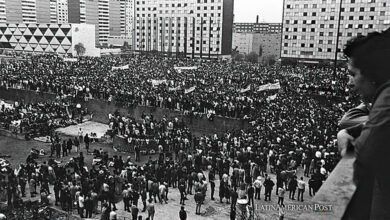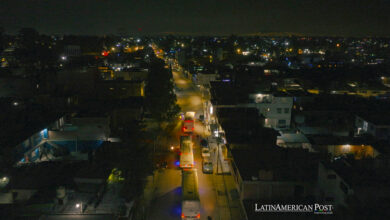Puerto Ricans Remember Massacre as Pulse Site Opens Before Demolition
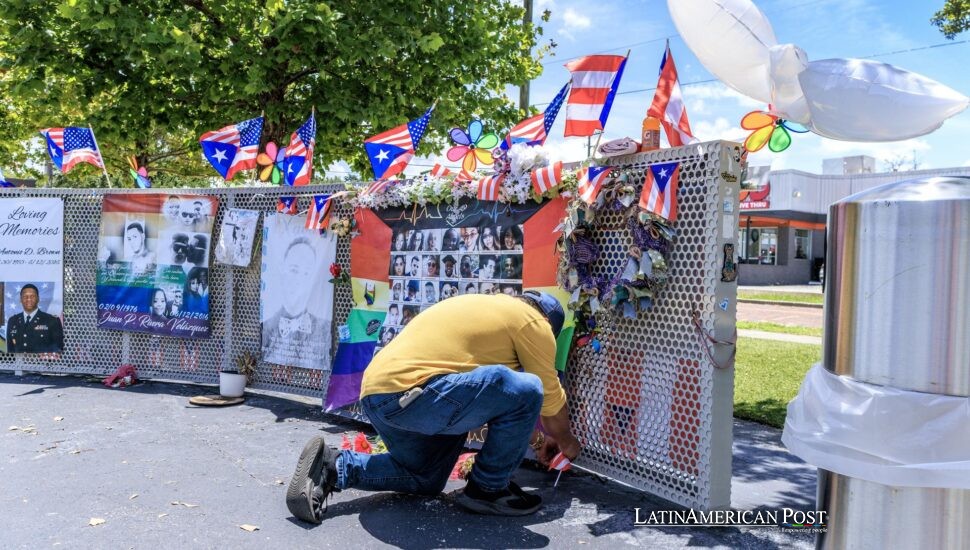
Nine years after a gunman killed 49 people inside Orlando’s Pulse nightclub, survivors and relatives—many of them Puerto Rican—walked through the building for the first time. They say the visit rekindled grief, rage, and fresh hope for a long-delayed memorial.
A Doorway Still Too Heavy to Cross
The rainbow-painted façade looks almost festive from Orange Avenue, but the instant the metal gate slides open, the weight of June 12, 2016, rushes back like humid Florida air. José Luis Báez, who staggered out that night covered in his best friend’s blood, sat under a jacaranda for nearly two hours on Thursday, watching busloads of families file past. He held a single carnation and an inhaler. “I walked up to the threshold twice,” he told EFE, tears cutting tracks through the sunscreen on his cheeks. “But my legs said no.” Inside, forensic crews had left chalk marks where bodies once lay; the bar still smelled faintly of rum, bleach, and stale confetti. A city archivist clicked photos of everything—from toppled stools to the remnants of a disco ball—before demolition crews arrived later this year. Some survivors stepped in, whispering to the dark. In contrast, others remained at the makeshift altar outside: laminated portraits, tiny Puerto Rican flags, paper cranes, LED candles that flicker day and night because nobody trusts real flame near so much grief.
From Parking-Lot Shrine to Promised Memorial
Pulse sits on a commuter artery that feeds downtown Orlando. Tourists learn from ride-shares to snap photos of the mural’s bright swaths; locals slow their cars, windows down, radios off as if passing a church. Yet the corner is technically a construction site—chain-link fence, dusty plywood, and permits that keep expiring. For nine years, families have asked when a permanent memorial will rise. “Soon,” officials said in 2017, 2019, and again after the pandemic froze fundraising galas. Last week, Mayor Buddy Dyer finally attached the dates: ground-breaking June 2026, ribbon-cutting autumn 2027, and a price tag of twelve million dollars. “I wish we had gotten here earlier,” he admitted, citing zoning battles and private property issues with the club’s previous owner.
The delay feels personal to María Conde, 69, who lives five blocks away and still jumps at fireworks. Every Wednesday, she carries fresh lilies to the fence and brushes wilted petals from the photo of her cousin Luis Daniel Wilson-León, a pharmacy tech who died shielding his boyfriend. “We need a dignified place,” she said, tracing his smile with one arthritic finger. “Not a parking lot with posters.” In 2018, the city hired design firm Coldefy to sketch a memorial garden shaped like a haloed dance floor—49 limestone pillars, water-jet mist, Puerto Rican flamboyán trees. Fundraising sputtered, and then politics intervened. Yet those blueprints now hang on county office walls again, dog-eared but alive.

Night of Terror, Decade of Reckoning
It was Latin Night—Noche Latina—when 29-year-old Omar Mateen burst in wielding a SIG Sauer MCX and Glock 17. He emptied hundreds of rounds, phoning 911 mid-rampage to pledge loyalty to ISIS. Forty-nine people died, and 58 were wounded. Twenty-three were Puerto Ricans or of Puerto Rican descent, most in their twenties. Franky Jimmy Dejesús Velázquez, 50, had been choreographing a quinceañera routine earlier that day. Brenda Lee Marquez McCool, a mother of 11, pushed her gay son to safety before she was shot. Jean Carlos Mendez Pérez and Luis Daniel Wilson-León died locked in an embrace under the DJ booth—first responders later separated them gently, refusing to break their final posture.
Pulse stood as the deadliest U.S. mass shooting until Las Vegas in 2017, yet nationwide gun laws barely budged. Florida, meanwhile, tightened restrictions on classroom discussions of sexuality; Governor Ron DeSantis’s official Pulse statement this year omitted LGBTQ or Latino references entirely. Survivors noticed. “We bury our people twice,” said Thomas Rodríguez, now 27. “First in caskets, then in silence.” He escaped through a bathroom window with a bullet graze on his calf; the scar curls beneath a tattoo that reads Amor gana—Love wins—in looping script. He returns every anniversary despite migraines triggered by helicopter sounds. “This building may fall,” he said, “but the story won’t.”
Between Grief and Hope, Puerto Rico Holds the Pulse
Thursday’s private walkthrough unfolded like a liturgy. Survivors entered in groups of five, each assigned a counselor. Some left rosaries on the sticky floor where the main bar once thrummed; others whispered names into the scorched walls, listening for echo. Outside, volunteers handed out fans printed with the flags of Puerto Rico and trans pride, the colors merging in sweaty palms. Ashley Papagni, Orlando’s public information officer, said architects studied these moments to refine the memorial’s emotional choreography: “A place of mourning, yes, but also movement—people danced here first.” Preliminary plans include a spiral path hugging the original footprint, 49 pillars casting noon shadows like clock hands, and a central ring of water where visitors can float orchids, the flower many families carried at the first mass funeral in 2016.
Among those orchids will surely be one for Christopher Leinonen, born in Detroit to a Puerto Rican mother raised on sofrito and Spanglish lullabies. His partner, Juan Ramón Guerrero, also died that night. The couple’s families buried them in a joint service; they are remembered in Puerto Rico during the island’s annual Pride parade with a banner reading Boricuas hasta el último baile—Puerto Ricans until the last dance.
José Luis still hasn’t stepped inside. He plans one more visit before the demolition, clutching Edward’s favorite cologne bottle—an amber vial he retrieved from a locker at Pulse the day after the massacre. He uncaps it sometimes; the scent of cedar, vanilla, and nightclub smoke makes his knees wobble. “Maybe if I stand where he died, my heart will accept what my brain knows,” he said, rubbing the vial like prayer beads. He paused, listening to distant traffic. “Edward used to say time is just a DJ changing track. I keep waiting for the next song.”
Also Read: Latin American Museum Plan Collides with Trump’s Sweeping Cultural Rollback
When the heavy machinery finally arrives, its steel jaws will bite into a wall still layered with rainbow paint and soot. Drone cameras will broadcast the demolition worldwide. But even rubble can’t bury a sound that keeps playing in memory—the bassline of reggaetón, the laughter of a bartender throwing napkins in the air, the shouts of ¡Wepa! that once shook the walls. Puerto Rican hearts keep time to that rhythm in the unfinished sanctuary on Orange Avenue, holding space until a promised garden blooms where 49 lives leave their light.

